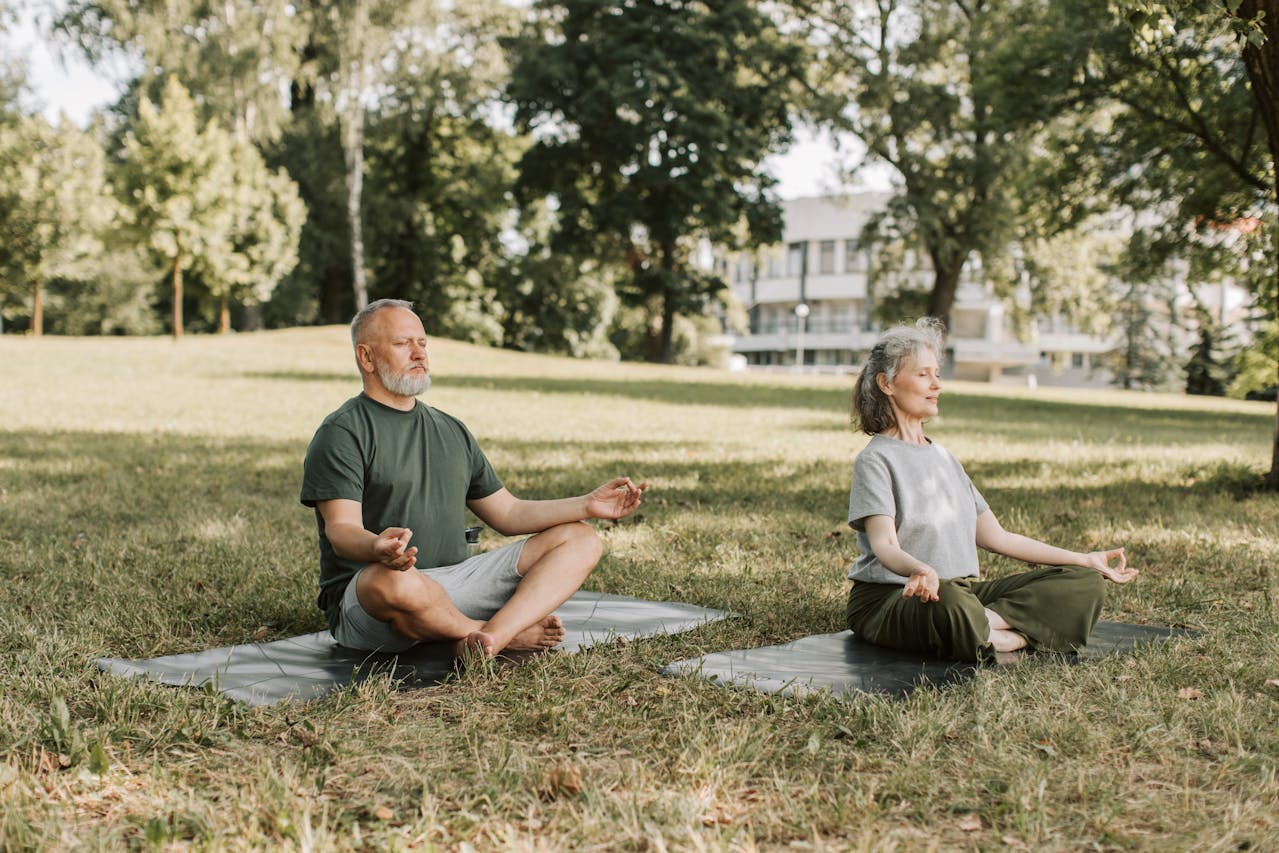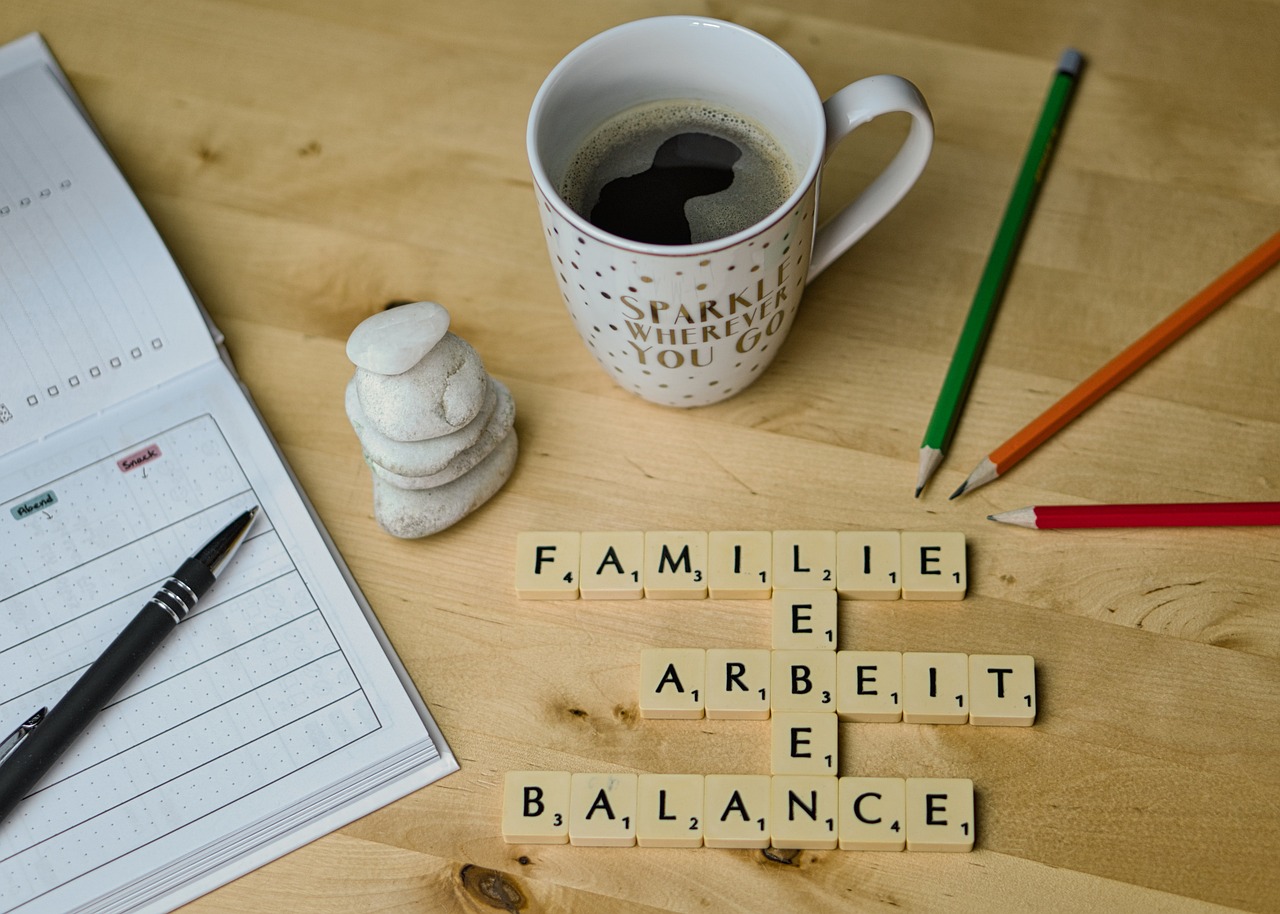Mental Health
How To Stress Reduction through Mindfulness Meditation
Mindfulness meditation is not a destination but a journey—a lifelong exploration of the present moment and the depths of self-awareness. As you embark on this transformative path, remember that the practice is adaptable and can be personalized to suit your unique needs and preferences.

Juggling work, family, and personal commitments can lead to overwhelming feelings of anxiety and tension. Enter mindfulness meditation—a powerful practice that offers a pathway to stress reduction and enhanced mental well-being.
In this comprehensive exploration, we will delve into the principles of mindfulness meditation, its proven benefits for stress management, and practical tips on incorporating this ancient practice into our daily lives.
Understanding Mindfulness Meditation
1. The Essence of Mindfulness:
At its core, mindfulness is set as being a complete gift inside the moment, without judgment. It involves cultivating awareness of our thoughts, feelings, and sensations with an attitude of openness and acceptance.
2. The Practice of Meditation:
Meditation is a method that encourages a heightened kingdom of attention and centered attention. Mindfulness meditation, rooted in ancient contemplative traditions, combines the principles of mindfulness with intentional, directed focus.
3. The Breath as an Anchor:
In mindfulness meditation, the breath often serves as an anchor—an ever-present point of focus. By directing attention to the breath, individuals can ground themselves in the present moment, creating a sense of stability and calm.
4. Non-Judgmental Observation:
A key aspect of mindfulness is observing thoughts and sensations without judgment. Instead of categorizing experiences as good or bad, mindfulness invites a curious and accepting attitude toward whatever arises.
5. Formal and Informal Practices:
Formal mindfulness meditation involves dedicated sessions of sitting or walking meditation. Informal practices extend mindfulness into daily activities, such as eating, walking, or even washing dishes, by bringing full attention to the task at hand.
The Stress-Reducing Power of Mindfulness Meditation
1. Alleviating the Impact of Chronic Stress:
Chronic pressure takes a toll on each intellectual and bodily health. Mindfulness meditation has been shown to reduce the physiological and psychological effects of chronic stress by promoting a relaxation response and enhancing coping mechanisms.
2. Cortisol Regulation:
Mindfulness practice has been associated with lower levels of cortisol, the stress hormone. By modulating cortisol production, mindfulness meditation contributes to a more balanced stress response.
3. Reducing Anxiety and Worry:
Mindfulness helps individuals detach from anxious thoughts by encouraging observation without attachment. This disengagement from the constant stream of worry allows for a more balanced perspective, reducing anxiety levels.
4. Enhancing Emotional Regulation:
Mindfulness fosters emotional intelligence by creating a space between stimuli and reactions. This pause allows individuals to respond to situations with greater composure, preventing emotional reactivity.
5. Building Resilience:
Regular practice of mindfulness meditation contributes to the development of emotional resilience. By cultivating a non-judgmental awareness of challenges, individuals can navigate adversity with greater adaptability and strength.
Scientific Insights into Mindfulness Meditation
1. Neurological Changes:
Studies using neuroimaging techniques have shown that mindfulness meditation can lead to structural changes in the brain, particularly in areas associated with emotion regulation, self-awareness, and attention.
2. Mind-Body Connection:
Mindfulness practices have been linked to positive changes in the autonomic nervous system, fostering a balance between the sympathetic (fight-or-flight) and parasympathetic (rest-and-digest) branches.
3. Impact on Brain Function:
Mindfulness has been associated with increased activity in the prefrontal cortex, the part of the brain responsible for executive functions such as decision-making, attention, and impulse control.
4. Reduction in the Amygdala Response:
The amygdala, a key player in the brain’s emotional processing, tends to show decreased activation in response to emotional stimuli after regular mindfulness practice. This suggests a diminished reactivity to stressors.
5. Improvements in Attention and Concentration:
Mindfulness meditation has demonstrated the ability to enhance attention and concentration. By training the mind to focus on the present moment, individuals can improve cognitive functions and reduce mental clutter.
Getting Started with Mindfulness Meditation
1. Establishing a Routine:
Consistency is prime to reaping the blessings of mindfulness meditation. Start with short sessions and gradually extend the duration as the practice becomes more comfortable.
2. Creating a Sacred Space:
Designate a quiet and comfortable space for your meditation practice. This could be a corner of a room, a cushion, or a dedicated chair.
3. Posture and Breath:
Sit comfortably with an upright posture. Close your eyes or preserve a smooth gaze. Direct your interest on your breath, staring at every inhalation and exhalation.
4. Guided Meditations:
For beginners, guided meditations can be valuable. Numerous apps and online sources provide guided periods led by way of means of skilled meditation instructors.
5. Mindful Walking:
Take mindfulness off the cushion and into your daily life with mindful walking. Pay interest to every step, the sensations to your feet, and the motion of your body.
6. Body Scan Meditation:
Scan your body from head to toe, directing attention to each part. Notice sensations without judgment, allowing any tension to dissolve.
7. Mindful Eating:
Transform your meals into mindful experiences. Pay interest to the flavors, textures, and aromas of every bite. Eat slowly and savor each moment.
Mindfulness Meditation in Everyday Life
1. Mindful Communication:
Practice aware conversation with the aid of being completely found in conversations. Listen attentively, observe body language, and respond thoughtfully.
2. Mindful Pause:
Integrate mindful pauses into your day. Before reacting to a challenging situation, take a moment to breathe and collect your thoughts.
3. Mindful Breathing Breaks:
Throughout the day, take a quick break for mindful breathing. A few minutes of focused breathing can provide a reset, reducing stress and increasing clarity.
4. Mindfulness in Routine Activities:
Infuse mindfulness into routine activities such as showering, commuting, or doing household chores. Bring your full attention to the sensations and experiences of each moment.
5. Mindfulness for Sleep:
Use mindfulness techniques to wind down before bedtime. Engage in a body scan or focus on your breath to quiet the mind and promote restful sleep.
Overcoming Common Challenges
1. Restless Thoughts:
It’s regular for the thoughts to wander all through meditation. When distractions arise, gently guide your attention back to your breath or chosen point of focus.
2. Impatience:
Results from mindfulness meditation may not be immediate. Patience is a fundamental aspect of the practice. Trust the process and allow the benefits to unfold over time.
3. Time Constraints:
Even brief moments of mindfulness can make a difference. If time is limited, incorporate mindfulness into short breaks throughout the day.
4. Expectations:
Approach mindfulness with an open mind and without specific expectations. Each session is unique, and the practice evolves.
5. Incorporating Mindfulness into Busy Schedules:
Mindfulness can be integrated into busy schedules. Find opportunities to pause and center yourself, whether it’s a few minutes of breathing exercises or a mindful walk during a break.
Mindfulness Meditation and Personal Growth
1. Cultivating Self-Awareness:
Mindfulness meditation facilitates self-awareness by fostering a deep understanding of thoughts, emotions, and behaviors. This self-awareness is a catalyst for personal growth.
2. Enhancing Emotional Intelligence:
Mindfulness contributes to emotional intelligence by promoting a non-reactive awareness of emotions. This heightened emotional intelligence supports healthier relationships and effective communication.
3. Stress Resilience:
As individuals become adept at navigating stress through mindfulness, they develop resilience—a capacity to bounce back from challenges with increased strength and adaptability.
4. Improved Concentration and Focus:
Enhanced attention and concentration are natural byproducts of mindfulness. This heightened focus extends to daily tasks, work responsibilities, and creative pursuits.
5. Mindfulness and Compassion:
The practice of mindfulness often leads to increased compassion—both for oneself and others. This compassionate perspective fosters empathy, understanding, and a sense of interconnectedness.
Mindfulness Meditation: A Lifelong Journey
Mindfulness meditation is not a destination but a journey—a lifelong exploration of the present moment and the depths of self-awareness. As you embark on this transformative path, remember that the practice is adaptable and can be personalized to suit your unique needs and preferences.
In the ebb and flow of life’s challenges, mindfulness meditation becomes a reliable anchor—a source of calm amidst the storm. By cultivating mindfulness, individuals can navigate the complexities of the modern world with greater ease, embracing each moment as an opportunity for growth and self-discovery.
As you integrate mindfulness into your daily life, celebrate the small victories, and approach each practice with an open heart and a gentle curiosity. In the journey toward stress reduction and enhanced mental well-being, mindfulness meditation offers a profound and empowering ally—a timeless practice that invites you to be present, to breathe, and to discover the peace that resides within.
10 Minutes Meditation for stress reduction:
If you are feeling stressed or overwhelmed, listen to this guided meditation to re-center yourself.
Frequently Asked Questions (FAQ)
- What is mindful meditation?
- Mindful meditation is a practice that involves bringing attention to the present moment with a non-judgmental and accepting mindset. It often involves focusing on the breath, sensations, or thoughts.
- How does mindful meditation help reduce stress?
- Mindful meditation promotes relaxation, reduces the impact of stressors, and helps individuals develop a more mindful response to stress, fostering a sense of calmness.
- Can mindful meditation improve mental well-being?
- Yes, practicing mindful meditation has been associated with improved mental health, including reduced anxiety, depression, and enhanced emotional well-being.
- Is mindful meditation suitable for beginners?
- Absolutely. Mindful meditation is accessible to beginners. Starting with short sessions and gradually increasing duration can help individuals ease into the practice.
- How often should one practice mindful meditation for noticeable benefits?
- Consistency is key. Even brief daily sessions, ranging from 5 to 20 minutes, can yield positive effects. The more consistently it is practiced the greater the potential benefits.
- Can mindful meditation improve focus and concentration?
- Yes, mindfulness meditation has been shown to enhance attention, focus, and cognitive performance. It trains the mind to stay present and attentive.
- Is there a specific time of day recommended for mindful meditation?
- The best time for mindful meditation varies based on individual preferences. Many find mornings conducive to establishing a positive tone for the day, while others prefer evenings to unwind and relax.
- Can mindful meditation be combined with other stress-reduction techniques?
- Yes, mindful meditation can complement other stress-reduction techniques such as exercise, deep breathing, and progressive muscle relaxation, creating a more comprehensive approach to stress management.
- Are there different forms of mindful meditation?
- Yes, various forms of mindful meditation exist, including mindfulness of breath, body scan meditation, loving-kindness meditation, and mindful walking. Individuals may choose the form that resonates most with them.
- Can mindful meditation benefit physical health?
- Yes, mindful meditation has been linked to improved physical health, including lower blood pressure, enhanced immune function, and better sleep quality.
- How long does it take to experience the benefits of mindful meditation?
- Some individuals may notice immediate benefits, such as increased relaxation. However, the cumulative effects on stress reduction and overall well-being may become more apparent with regular practice over time.
Mental Health
How to Overcome Phobias: 15 Positive Psychology-Based Strategies That Really Work

Phobias can be deeply disruptive to daily life—limiting where you go, how you behave, and even who you spend time with. Whether it’s a fear of flying, heights, spiders, or public speaking, these intense irrational fears can make life feel smaller and more stressful.
But there’s good news. New research in positive psychology—the science of human flourishing—offers innovative tools and techniques that not only help reduce fear but also rebuild confidence, resilience, and a deeper sense of control.
In this guide, you’ll discover:
- What phobias are and how they develop
- Traditional vs. positive psychology approaches
- A comprehensive list of 15 strategies to overcome phobias
- Tools and resources for long-term recovery
What Are Phobias?
A phobia is an intense, irrational fear of a specific object, situation, or activity. While everyone experiences fear from time to time, phobias are persistent, exaggerated, and often debilitating.
Types of Phobias
- Specific phobias (e.g., fear of spiders, needles, flying)
- Social phobia (social anxiety disorder) – fear of public scrutiny or embarrassment
- Agoraphobia – fear of open spaces or places where escape may be difficult
Common Symptoms
- Rapid heartbeat or palpitations
- Shortness of breath
- Sweating or chills
- Nausea or dizziness
- Feeling out of control or detached from reality
- Urge to escape or flee the situation
What Causes Phobias?
Phobias develop due to a mix of biological, psychological, and environmental factors.
🧬 Genetic Predisposition
Some people are more biologically wired to experience anxiety or fear. If a close family member has a phobia, you might be more susceptible too.
🧠 Learned Behavior
Negative experiences—like being bitten by a dog or getting stuck in an elevator—can condition the brain to associate fear with that stimulus.
🧒 Childhood Influence
Overprotective parenting or growing up around anxious caregivers can lead to phobia development.
🧪 Neurological Factors
Hyperactivity in the amygdala (the brain’s fear center) has been linked to exaggerated fear responses and difficulty regulating emotions.
Traditional Treatments for Phobias
Psychologists have successfully used a range of evidence-based treatments to help people manage and even eliminate phobias. These include:
🧠 1. Cognitive Behavioral Therapy (CBT)
Helps individuals recognize and change irrational thought patterns that fuel fear.
🎯 2. Exposure Therapy
Gradual exposure to the feared object or situation to desensitize the mind and reduce fear responses.
💊 3. Medication
Anti-anxiety medications or beta-blockers may be used in short-term, high-stress scenarios (e.g., public speaking), but are not a long-term cure.
While effective, many of these therapies focus on reducing symptoms. Positive psychology adds another layer: it focuses on building inner strength, emotional resilience, and growth.
Why Use Positive Psychology for Phobias?
Positive psychology isn’t about ignoring the fear or “thinking positive.” Instead, it emphasizes:
- Building on strengths, not just fixing weaknesses
- Enhancing emotional intelligence
- Cultivating hope, resilience, and optimism
- Using mindfulness and values-based actions to navigate fear
By integrating these tools with traditional therapies, individuals can experience faster, deeper, and more sustainable healing.
15 Positive Psychology-Based Approaches for Overcoming Phobias
1. Strengths-Based Reflection
Instead of focusing only on what’s “wrong,” identify what’s strong within you. Character strengths like bravery, curiosity, or perseverance can be activated during fearful moments.
Try this: Write about a time when you overcame a challenge. What personal strengths did you use?
2. Gratitude Journaling
Gratitude rewires the brain to focus on safety and abundance rather than danger.
Try this: Each evening, jot down 3 things you’re grateful for—even small wins like “I made it through a stressful day.”
3. Mindfulness and Present-Moment Awareness
Fear often lives in the “what if.” Mindfulness teaches you to anchor into the now.
Try this: Practice body scans or guided meditations when anxiety arises.
4. Hope Mapping
Instead of visualizing disaster, try planning out hopeful, empowering future outcomes.
Try this: Set a long-term goal, outline the steps, and imagine yourself succeeding.
5. Self-Compassion Practices
Phobias often trigger shame or frustration. Self-compassion teaches you to treat yourself like a supportive friend.
Try this: Say, “This is hard, but I’m doing my best, and that’s enough.”
6. Goal-Setting With Micro-Steps
Overcoming fear isn’t about huge leaps—it’s about consistent, small wins.
Try this: If you’re afraid of elevators, your first goal might be just standing near one for 30 seconds.
7. Positive Visualization
Picture yourself succeeding in feared situations. Over time, this trains the brain to expect success.
Try this: Before a triggering event, imagine yourself calm, capable, and grounded.
8. Values Clarification
Fear shrinks life. Values help expand it.
Try this: Ask yourself, “What do I want more than I want to avoid fear?” Then act in alignment with that.
9. Flow Activities
Engaging in absorbing hobbies (like art, music, or dance) lowers anxiety and boosts positive emotion.
Try this: Schedule weekly “flow time” to help regulate your nervous system.
10. Resilience Journaling
Track how you bounce back from stress. Over time, this builds confidence in your ability to recover.
Try this: After a challenge, write down: What happened? How did I cope? What would I do differently?
11. Empathy-Based Reflection
Sometimes we fear judgment. Reflecting on shared human experience reduces isolation.
Try this: Remind yourself: “Many people have fears. I’m not alone, and I’m not broken.”
12. Emotion Labeling
Naming emotions reduces their intensity—a concept called “name it to tame it.”
Try this: Say out loud, “I feel anxious, but that’s just a feeling—it will pass.”
13. Positive Reframing
Instead of “I’m weak for feeling scared,” try, “I’m facing something hard—and that’s brave.”
14. Social Connection
Talk with others who’ve overcome similar fears. Connection can inspire and normalize your journey.
Try this: Join an online group or share your story with a trusted friend.
15. Celebrate Tiny Wins
Every small victory rewires your brain. Celebrate each step, no matter how minor.
Try this: After doing something scary, reward yourself with praise, rest, or something fun.
Recommended Resources
- Books:
- The Happiness Trap by Russ Harris (ACT-based techniques)
- Emotional Agility by Susan David
- Rewire Your Anxious Brain by Catherine Pittman
- Apps:
- Insight Timer (for mindfulness)
- Moodnotes (for CBT-based journaling)
- Sanvello (therapy tools & mood tracking)
- Online Programs:
- PositivePsychology.com’s Emotional Intelligence Toolkit
- Mindful.org’s self-guided meditations
When to Seek Professional Help
Phobias are treatable, and you don’t need to go it alone. If fear is affecting your job, relationships, or daily functioning, consider working with a:
- Licensed therapist (especially CBT or ACT-trained)
- Clinical psychologist
- Psychiatrist (for medication support if needed)
Combining professional help with self-directed positive psychology techniques offers the best of both worlds.
Final Thoughts: You Are More Powerful Than Your Fear
Phobias are not flaws or weaknesses—they are learned responses that can be unlearned. Through a blend of self-awareness, compassion, and science-backed tools, you can begin the process of reclaiming your life from fear.
The path forward doesn’t require perfection—it only asks for progress. And with these 15 positive psychology strategies, you’re well on your way.
Phobia Relief: From Fear to Freedom (See Video)
Mental Health
What Is A Depression Attack? Symptoms, Causes & How To Cope With One

We’re all familiar with the concept of a panic attack — an intense, short-lived burst of fear or anxiety. But what happens when the emotion that floods your mind and body isn’t panic, but deep despair? That’s what many mental health professionals are now referring to as a depression attack.
Unlike general sadness or low mood, a depression attack can feel sudden, heavy, and almost paralyzing. Let’s break down what a depression attack really is, how it differs from other mental health episodes, and what you can do to navigate it with care and control.
What Is A Depression Attack?
A depression attack is an intense and sudden wave of depressive symptoms that can strike seemingly out of nowhere. It can last minutes, hours, or even a couple of days, leaving the person emotionally drained, mentally foggy, and physically exhausted.
According to psychologists, it is not officially listed in the DSM-5 (Diagnostic and Statistical Manual of Mental Disorders), but it’s a term increasingly used in both therapeutic and online mental health communities to describe a real, valid, and deeply overwhelming experience.
This kind of attack can occur in people who have clinical depression or even in those who have never been diagnosed but are under extreme emotional strain.
🧠 Common Symptoms of a Depression Attack
While everyone’s experience with depression may differ, a depression attack can include several of the following symptoms:
- Sudden, intense emotional heaviness
- Overwhelming sadness or hopelessness
- Exhaustion and lack of energy
- Negative self-talk or intrusive thoughts
- Social withdrawal or desire to isolate
- Tearfulness or emotional numbness
- Difficulty concentrating or completing tasks
- Changes in appetite or sleep patterns
Some people describe it as a feeling of being “emotionally suffocated” or “suddenly shut down.”
⚠️ How Is a Depression Attack Different from a Panic Attack?
It’s easy to confuse a depression attack with a panic attack, especially because both can happen suddenly and feel overwhelming. However, they affect different emotional systems.
Depression Attack Panic Attack Rooted in sadness, hopelessness Rooted in fear, anxiety Often slow to peak, but lingers longer Builds fast, but resolves within minutes Emotionally numbing or draining Causes physical symptoms like racing heart Mental fog, social withdrawal Sweating, shortness of breath
Understanding this difference is key to choosing the right coping strategy.
💥 What Triggers a Depression Attack?
Triggers can vary greatly depending on a person’s background, environment, or emotional resilience. Common triggers include:
- Chronic stress – From work, finances, or personal life
- Trauma or emotional overwhelm – Recent or past unresolved trauma
- Grief or loss – Including non-death losses like divorce or job loss
- Loneliness – Lack of emotional support
- Burnout – Emotional, physical, and mental exhaustion
- Hormonal changes – Especially for women during PMS, postpartum, or menopause
Sometimes, there is no clear trigger, which can make the episode even more frightening or confusing.
🧘 How to Cope with a Depression Attack in the Moment
If you feel a depression attack coming on or are already in the middle of one, here are some practical steps to help ground yourself:
1. Pause and Acknowledge
Give yourself permission to feel what you’re feeling without judgment. Naming the experience—“I’m having a depression attack”—can help you take back some control.
2. Engage the Senses
Try sensory grounding: hold an ice cube, take a warm shower, or light a calming candle. Reconnecting with your senses can disrupt mental spirals.

3. Practice Deep Breathing
Slow, diaphragmatic breathing can help calm your nervous system. Try the 4-7-8 method: inhale for 4 seconds, hold for 7, exhale for 8.
4. Reach Out to Someone
You don’t have to go through it alone. A friend, therapist, or mental health hotline can offer emotional anchoring in moments of crisis.
5. Write It Out
Journaling the thoughts and feelings running through your mind can externalize your pain and make it easier to manage.
📞 When to Seek Professional Help
If you’re experiencing depression attacks frequently or they begin to affect your ability to function daily, it’s time to seek professional support. Mental health professionals can provide a diagnosis, treatment plan, and tools to better manage these episodes.
Therapy Options That Help:
- Cognitive Behavioral Therapy (CBT): Helps reframe negative thought patterns
- Dialectical Behavior Therapy (DBT): Focuses on emotional regulation and distress tolerance
- Medication: Antidepressants can be helpful in cases of chronic or clinical depression
Emergency Support: If you are having thoughts of self-harm or suicide, please contact a crisis line or seek immediate help from a local emergency service.
🛠️ Long-Term Prevention Strategies
Once you’ve recovered from a depression attack, implementing long-term wellness habits can help reduce the likelihood of future episodes:
- Maintain a consistent sleep schedule
- Exercise regularly—even walking counts
- Limit alcohol, caffeine, and processed foods
- Practice mindfulness or meditation
- Stay socially connected—even virtual connections matter
- Attend therapy regularly, even when feeling better
Recovery isn’t a straight line. Be kind to yourself on the journey.
🌈 Final Thoughts: You’re Not Alone
Depression attacks are real, valid, and deeply disruptive. But the most important thing to remember is that they are temporary. With the right coping mechanisms and support system, you can find light again—even when everything feels dark.
Whether it’s therapy, community, medication, or self-compassion, your healing is possible. You are not weak for struggling; you are strong for surviving.
If you’re struggling with your mental health, consider speaking with a licensed therapist. Help is out there, and healing is always within reach.
Read More: How To Stress Reduction through Mindfulness Meditation
Happiness
Laugh More Stress Less: The Power of Humor in Happiness
In the perpetual hustle of modern living, we often overlook one of the most potent antidotes to our stress-filled days—humor. It’s the quintessential elixir that can turn even the most dire moments into opportunities for joy.
In the perpetual hustle of modern living, we often overlook one of the most potent antidotes to our stress-filled days—humor. It’s the quintessential elixir that can turn even the most dire moments into opportunities for joy. This extensive exploration into the largely untapped resource of laughter aims to underscore not only the rib-tickling enjoyment it brings but also the robust framework of benefits it adds to our holistic well-being. Also, we learn that, how to work is laugh more stress less?

Table of Contents
The Universal Language of Laughter
From the raucous chuckles that echo through a bustling comedy club to the subtle, knowing smiles exchanged in a quiet conversation, laughter is a universal language understood by all. It transcends cultural nuances and linguistic barriers, forging connections in its shared expression. The infectious nature of laughter weaves a communal thread, fostering a shared experience of merriment that unites us.
Acknowledging the Connection Between Humor and Happiness
The human experience is replete with opportunities to choose humor over solemnity. These choices, however small, can pave the way for happiness. While humor is not a panacea for all of life’s afflictions, it is an indispensable companion that our minds and bodies greatly benefit from.
Previewing the Positive Impact of Laughter on Stress Reduction
In this post, we’ll dissect the multifaceted relationship between humor and happiness, starting with the unequivocal stress-reducing effects of laughter. You’ll discover the physiological changes that occur in the body when laughter takes over, and how these changes act as a powerful shield against the tide of stress.
The Science of Laughter
Exploring the Psychological Benefits of Laughter
Beyond its surface level of therapeutic joy, laughter triggers a cascade of psychological benefits that linger long after the moment has passed. It releases tension, wards off feelings of despair, and creates a buffer against the everyday worries that ail us.
The Release of Endorphins and Stress Reduction
The physical act of laughing triggers the release of endorphins, nature’s own version of a mood-altering substance. These ‘feel-good’ hormones not only provide instant gratification, but they also promote a sense of well-being that encourages resilience in the face of stress.
Laughter as a Natural Mood Elevator
Additionally, laughter brings with it an influx of oxygen-rich air, promoting a play of neurotransmitters that can elevate our mood. It’s a simple, yet potent, way to counter melancholy, even when it feels most pervasive.
Laughter as a Coping Mechanism
The Role of Humor in Dealing with Life’s Challenges
When life throws us a curveball, humor becomes a defense mechanism, a shield against emotional onslaught. This section explores how humor acts as a powerful ally in confronting challenges, helping us find light in moments of darkness.
How Laughter Acts as a Stress Buffer
Understanding the nuances of how humor buffers us from stress is crucial in leveraging its full potential. We unravel the ways it redirects our focus from worries to the lighter side of life, promoting a mental shift that reduces the impact of stressful situations.
Developing a Humorous Perspective on Adversity
It’s not merely about finding humor in external circumstances; it’s about cultivating a perspective that naturally gravitates towards the humorous, making even the most trying hardships more palatable to our minds and hearts.
Social Bonds Through Laughter
Building Connections Through Shared Laughter
The shared experience of laughter is a potent catalyst for forging connections. Whether with friends, family, or even strangers, the echoes of shared mirth can deepen social bonds in ways that mere words often cannot.
The Importance of Humor in Social Relationships
In this section, we take a deep dive into how humor acts as the social glue that binds relationships. Amidst the rites and rituals of social interaction, it’s often the lighthearted exchanges that resonate most profoundly and create lasting memories.
Creating a Positive Atmosphere in Social Interactions
Laughter energizes social spaces, setting the stage for positive interactions that can uplift not only individual spirits but also the collective mood of a group.
Humor and Physical Well-Being
The Impact of Laughter on Physical Health
Laughter isn’t just good for the soul; it’s a boon for the body. We explore the various ways in which humor can manifest physical benefits, from improved cardiovascular health to enhanced muscle relaxation.
Boosting the Immune System Through Laughter
The relationship between laughter and a robust immune system is no joke. By stimulating antibody cells, laughter becomes a formidable defender against the onset of illnesses, both chronic and acute.
Laughter as a Natural Relaxation Technique
Lauded as a natural relaxation technique, laughter leads to the reduction of stress-related symptoms and the alleviation of muscle tension. It’s as though each bout of laughter is a mini spa day for the body, rejuvenating and invigorating from the inside out.

Incorporating Humor into Daily Life
Finding Humor in Everyday Situations
Life itself is a theater of the absurd, rife with opportunities for finding the humor in the humdrum. This section imparts strategies for tweaking our perspective to notice and appreciate the comedic underpinnings of routine.
Cultivating a Light-hearted Approach to Challenges
Each challenge is an invitation for the clever application of humor. Discover how approaching obstacles with a light touch can transform the most daunting tasks into manageable puzzles, ripe with potential for amusement.
Incorporating Playfulness into Routine Activities
By infusing even the most mundane activities with playfulness and light-heartedness, we can turn daily chores into opportunities for joy. This is the essence of living a life peppered with laughter and an excellent avenue for reducing stress.
Types of Humor and Individual Preferences
Understanding Different Styles of Humor
Not all humor is created equal. Diving deep into the various genres of comedy, we explore the wide spectrum of what tickles the funny bone and why certain styles resonate more strongly with individuals.
Embracing Personal Preferences in Comedy
Each of us has a unique comedic compass that points toward our personal preferences. In this section, we encourage readers to revel in their own brand of humor, asserting that there’s no one-size-fits-all when it comes to laughter.
The Power of Tailoring Humor to Individual Tastes
When humor is tailored to fit individual tastes, it becomes a laser-focused tool for enjoyment and, subsequently, stress reduction. Adaptive humor is not only more effective but also more endearing, creating a more personal and impactful experience.
Laughter Yoga and Therapeutic Laughter
Exploring Laughter Yoga as a Stress-Relief Practice
Rooted in the belief that intentional laughter yields the same benefits as natural laughter, Laughter Yoga is an exercise in mirth that has gained popularity as a wellness practice. We unpack the philosophy behind this unique modality and its potential as a stress-relieving practice.
The Therapeutic Benefits of Laughter Workshops
Laughter workshops offer a structured setting to engage in the act of laughing, with the goal of reaping the many therapeutic benefits. Insights from these workshops underscore the social and emotional aspects of communal laughter.
Integrating Laughter into Mindfulness Practices
Laughter and mindfulness may seem at odds, but when interwoven thoughtfully, they form a sublime tapestry of present-moment joy. This section explores practical ways to integrate laughter into mindfulness practices for an enriched experience.
Humor in the Workplace
Fostering a Positive and Humorous Work Environment
Workplaces that prioritize and allow for humor to flourish are often the most pleasant and productive. Discover the managerial and cultural strategies that cultivate an environment where laughter is embraced.
Using Humor to Improve Team Dynamics
In the realm of teamwork, humor is not just a luxury; it’s a critical component. Teams that laugh together are often the most cohesive, adaptable, and innovative. Explore the ways in which team dynamics can be improved through humor.
The Role of Leadership in Encouraging a Lighthearted Workplace
Leaders set the tone for the work atmosphere. We showcase examples of leadership that have successfully employed humor as a tool for engagement and morale-boosting, inspiring others to follow suit.
Humor and Mental Health
Laughter as a Tool for Managing Anxiety and Depression
When it comes to mental health, laughter is an unsung hero. Its unassuming nature belies its prowess as a coping mechanism for those managing anxiety and depression. We offer practical insights and suggestions for incorporating humor into one’s mental health toolkit.
The Therapeutic Role of Comedy in Mental Health
Comedy isn’t just entertainment; it’s therapy. This portion of the post highlights the role of humor in the mental health industry, from therapeutic stand-up comedy to scripted humor implemented as part of treatment.
Incorporating Humor into Self-Care Routines
Self-care without joy is an incomplete practice. We provide tips for infusing self-care routines with humor, ensuring that they become not arduous tasks, but delightful rituals that contribute to one’s overall well-being.
Comedy and Cultural Expression
The Role of Humor in Cultural Identity
Cultural humor is a defining aspect of identity and community. From classic comedies to cultural memes, we explore how humor becomes a hallmark of shared experiences, history, and aspirations.
Using Comedy for Social Commentary
Comedy has a way of saying what other mediums cannot. We dissect the art of using humor for incisive social critique, praising the comedians who deftly wield their wit to mirror society’s absurdities.
Appreciating Diversity in Humor
An appreciation for humor requires an open mind and a recognition of the diversity of comic sensibilities. We champion the adage that laughter is best when shared, and the more varied the laugh, the richer the experience.
Family Humor and Bonding
Creating a Playful Family Culture
Families that laugh together often stay together in spirit, if not in proximity. Here, we provide strategies for building a family culture rooted in playfulness and a shared love of laughter.
The Influence of Humor on Parent-Child Relationships
Humor can be a parent’s most disarming and effective tool. We explore the delicate balance of using humor to connect with children, fostering deep, meaningful relationships built on mutual respect and joy.
Nurturing a Joyful Family Atmosphere
Joy doesn’t just happen; it’s nurtured. This section is brimming with tips for creating a home environment that resonates with laughter, from family game nights to impromptu joke sessions.
Laughter Challenges and Laughter Clubs
Participating in Laughter Challenges for Community Building
Laughter that ripples across the community can have a profound impact, transcending the individual to uplift the collective. Learn about laughter challenges that have become a gathering point for communities near and far.
The Concept of Laughter Clubs and Group Laughter
Beyond the power of the solo laugh lies the resounding strength of a group’s laughter. Be inspired by the phenomenon of laughter clubs and the sense of belonging they bestow on their members.
Spreading Laughter for Collective Well-being
The notion that laughter is contagious is taken to a larger, even grander level in this section, as we explore how collective laughter can promote a sense of well-being that ebbs and flows throughout a community.
Success Stories and Humor Transformations
Real-life Experiences of Using Humor for Happiness
True stories of individuals who have harnessed humor to overcome their trials and tribulations illuminate the path to a happier life. Prepare to be uplifted and inspired by their narratives of transformation through laughter.
Positive Changes in Mental and Emotional Well-being
Listeners of these tales of transformation will be encouraged to recognize the seeds of humor in their own lives and the potential they hold for change.
Practical Tips and Lessons Learned from Embracing Humor
Derive actionable insights and pearls of wisdom from those who have walked the path towards a more humorous existence. Their pragmatic tips will serve as a compass for your humor-infused journey.
The Future of Happiness Through Humor
Embracing Laughter as a Lifelong Companion
Laughter isn’t merely a temporary reprieve from life’s challenges; it’s a steadfast companion that, when embraced fully, can alter the course of our existence. We look forward to a future where laughter is not just encouraged but expected as an integral part of well-living.
Inspiring a Humorous and Joyful Global Community
Here, we cast a vision of a world where laughter is the common thread that binds us, a world community characterized by its proclivity for humor and the ensuing joy it brings.
The Ongoing Journey of Stress Reduction Through Laughter
The quest for stress reduction through laughter is a lifelong one, punctuated by joyful moments that serve as beacons along the path. We encourage you to keep laughing, keep exploring, and most of all, keep living.
Conclusion
In summary, humor is far more than a reaction to life’s absurdities; it’s a proactive stance, a way of life that can enhance our experience immeasurably.
The evidence is overwhelming—laughter contributes to our health, happiness, and overall well-being. We urge you to take charge of your stress levels and infuse more laughter into your life.
The path to a happier and healthier life is one you tread with each chuckle, chortle, and full-throated guffaw. Join us as we revel in the wondrous, stress-reducing power of humor and commit to its ceaseless cultivation in our lives and communities.
By weaving together practical advice, inspirational anecdotes, and scientific understanding, our exploration into the laughter-laden landscape of human happiness is a testament to the simple magnificence of humor. It’s an invitation to cast off the weight of worry in favor of a more buoyant, laughter-lit existence.
-

 Personal Care6 months ago
Personal Care6 months agoWhy Regular Massages Could Be the Game-Changer Your Body and Mind Crave
-

 Mental Health5 months ago
Mental Health5 months agoHow to Overcome Phobias: 15 Positive Psychology-Based Strategies That Really Work
-

 Lifestyle6 months ago
Lifestyle6 months agoWhen Is It Time To Get a Divorce? Emotional, Mental & Practical Signs to Know
-

 Lifestyle12 months ago
Lifestyle12 months agoFinancial Well-Being: Building a Healthy Relationship with Money
-

 Fitness6 months ago
Fitness6 months ago6 Quick Morning Exercises to Burn Belly Fat All Day
-

 Lifestyle6 months ago
Lifestyle6 months agoHow to Improve Egg Quality for Fertility: Science, Lifestyle and Expert Tips
-

 Mental Health6 months ago
Mental Health6 months agoWhat Is A Depression Attack? Symptoms, Causes & How To Cope With One
-

 Food6 months ago
Food6 months agoTop 7 Magnesium-Rich Nuts and the Best Ways to Eat Them for Maximum Health Benefits









Pingback: Anxiety Disorder: Coping Strategies and Practices Daily Life
Pingback: How to Measure Happiness, Why It's Essential for Well-being
Pingback: How to Boost Immunity Naturally? 10 Tips to Execute This